Grootbos Private Nature Reserve is not just another five-star destination. Nestled near Hermanus in the Western Cape, it’s a place where luxury meets purpose — where sustainability isn’t just a buzzword, it’s a way of life.
The Grootbos team is known for being professional, pioneering, and passionate about conservation. As they put it:
“We don’t just conserve the environment. We are deeply integrated and supportive within our ecosystem, constantly pioneering new paths.”
And they truly are walking the talk. Their latest innovation? Partnering with Amesect and Natimby to turn restaurant and garden waste into something extraordinary — nutritious chicken feed and organic fertiliser that supports their very own fynbos nursery.
A Collaboration in Innovation
Grootbos generates two main types of waste — kitchen scraps and garden waste — each needing a different approach. Together, Amesect’s black soldier fly technology and Natimby’s composting solution have created a smart circular system that deals with both.
Amesect’s black soldier fly larvae (BSFL) are astonishingly efficient at devouring food waste. When they hatch, they’re almost microscopic, but within just 9 to 10 days they can grow more than 10,000 times their original size. Imagine a toddler growing into a blue whale in just over a week — that’s how fast and powerful nature’s little recyclers are!
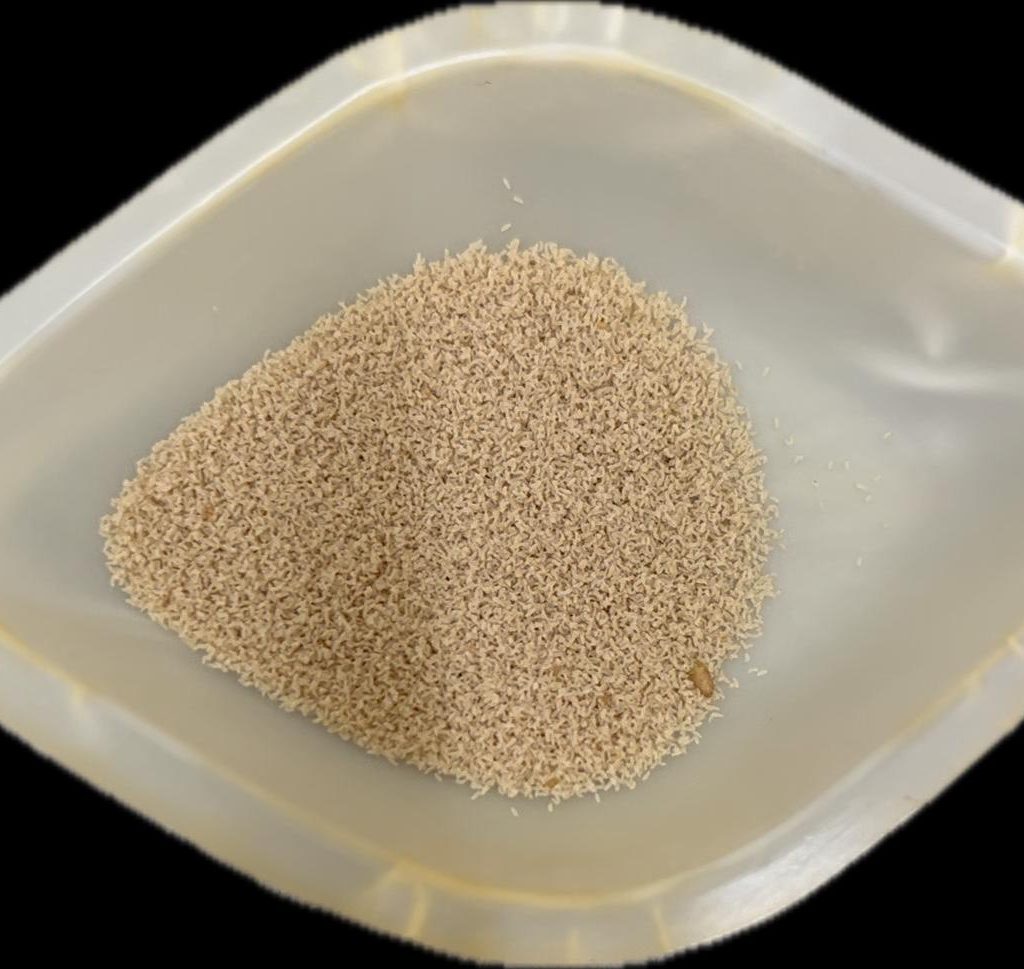
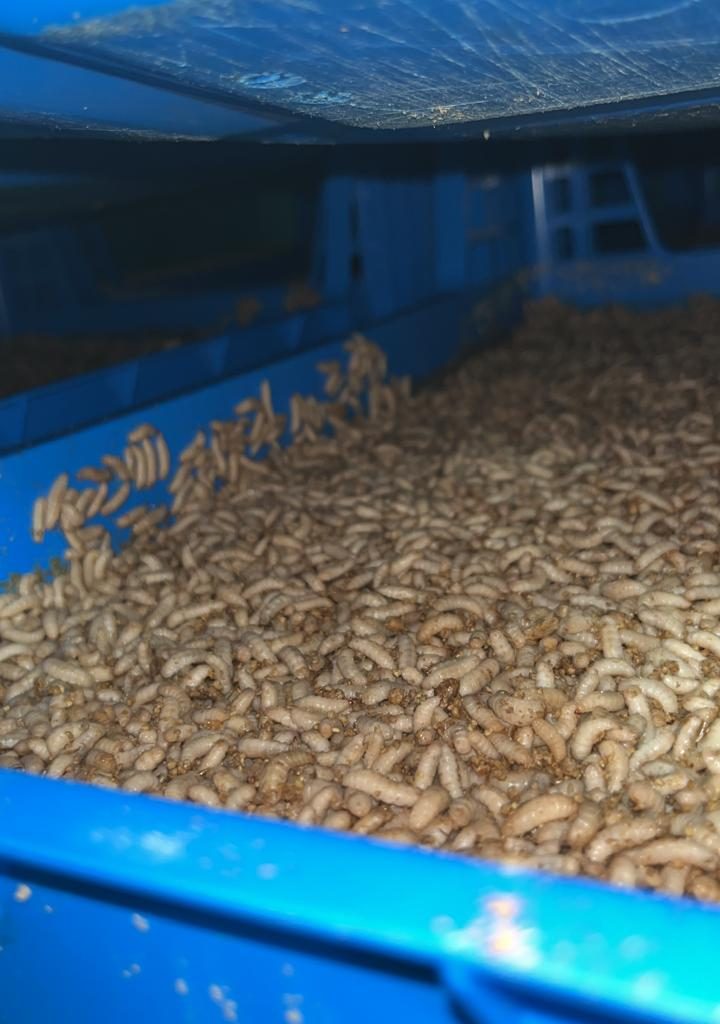
Once the larvae have finished feeding, what’s left behind is a mixture of their droppings and the processed food residue — known as frass. This frass is a nutrient-rich, organic fertiliser that helps improve soil health and boost plant growth.
Meanwhile, Natimby handles the tougher waste: garden clippings, brush, and agricultural residue. Their innovative composting method not only turns this into valuable compost but also generates heat energy — energy that can be used for practical applications like heating water or warming greenhouses.
Grootbos grows and sells a variety of beautiful and unique fynbos plants on their eco-reserve, and Natimby’s system now helps them use that compost heat to warm their greenhouses — creating the perfect environment for their thriving nursery.
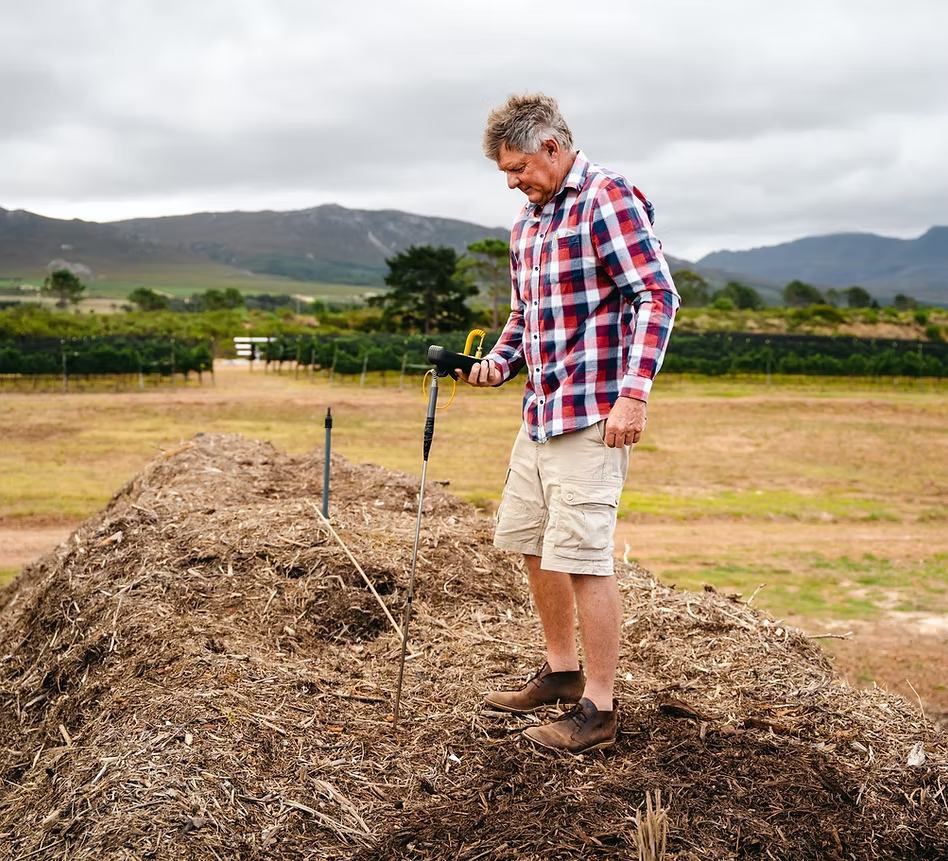
Together, Amesect and Natimby are developing an integrated system — a true circular economy model. The goal? Use the energy produced by composting to help power the fly-growing process, and in turn, use the frass from the flies to enrich the compost. It’s nature’s recycling system, perfected.
The Road to a Black Soldier Fly Solution
Of course, you can’t just toss larvae into a pile of restaurant waste and hope for the best. Amesect’s technology — including their Magic³ system — provides the perfect growing environment for the larvae, but the waste itself needs careful preparation before it goes in.
That means answering questions like:
- Is the waste chopped to the right consistency?
- Does it have the correct moisture level?
- Are the nutrients balanced for the larvae to thrive?
- How many larvae are needed to process the waste efficiently?
Grootbos also had one more challenge: they wanted to avoid any unpleasant smells during the pre-treatment process. So Amesect began testing a safe, natural preservative — one that would keep the waste fresh without harming the larvae in any way.
Waste Analysis and Trials
To fine-tune the process, Amesect’s Dr. Pieterse, one of southern Africa’s leading black soldier fly experts, designed a series of trials to test how Grootbos’ unique waste mix would perform.
First, small-scale lab trials were conducted using restaurant waste from Grootbos, compared against a standard control feed known to produce optimal larvae growth. The results were encouraging — the larvae feeding on Grootbos waste actually grew larger than the control group! However, the waste contained too much moisture, which slowed their growth rate.
Next, Amesect ran preservative trials to make sure the larvae wouldn’t be affected. Several different doses were tested, and the results were clear: the larvae were completely unaffected, and the smallest dose of preservative kept the waste fresh and odour-free for much longer.
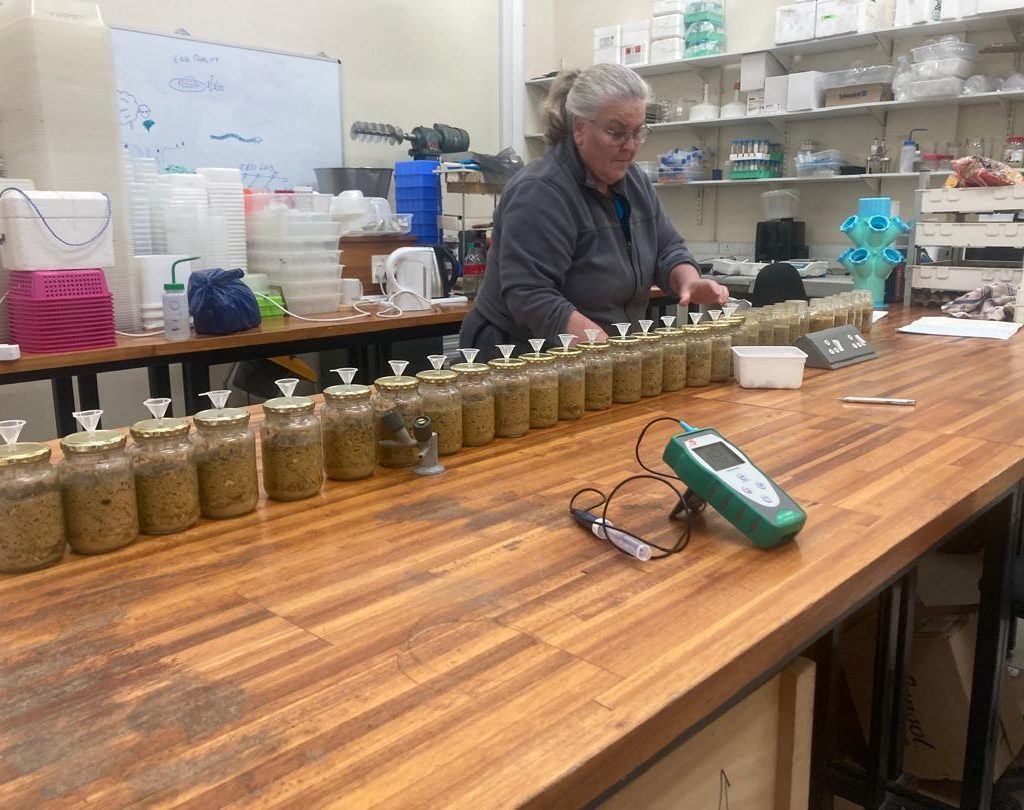
Finally, a commercial-scale trial was done using Amesect’s Micro Magic³ system — a compact, high-tech version of the full solution. In this test, the restaurant waste was pre-treated with preservative, dewatered, and then used as feed for the larvae. After just five days, the larvae had grown to impressive sizes once again.
One challenge did emerge: some batches of kitchen waste contained a lot of fat and oil, which made it trickier to separate the larvae from the frass using Amesect’s specialist separation technology, affectionately called the Mobi Dick.
To tackle this, the Grootbos and Amesect teams are now working together to reduce the fat load by separating it from other kitchen waste — and even testing natural emulsifiers that could make fats more digestible for the larvae.
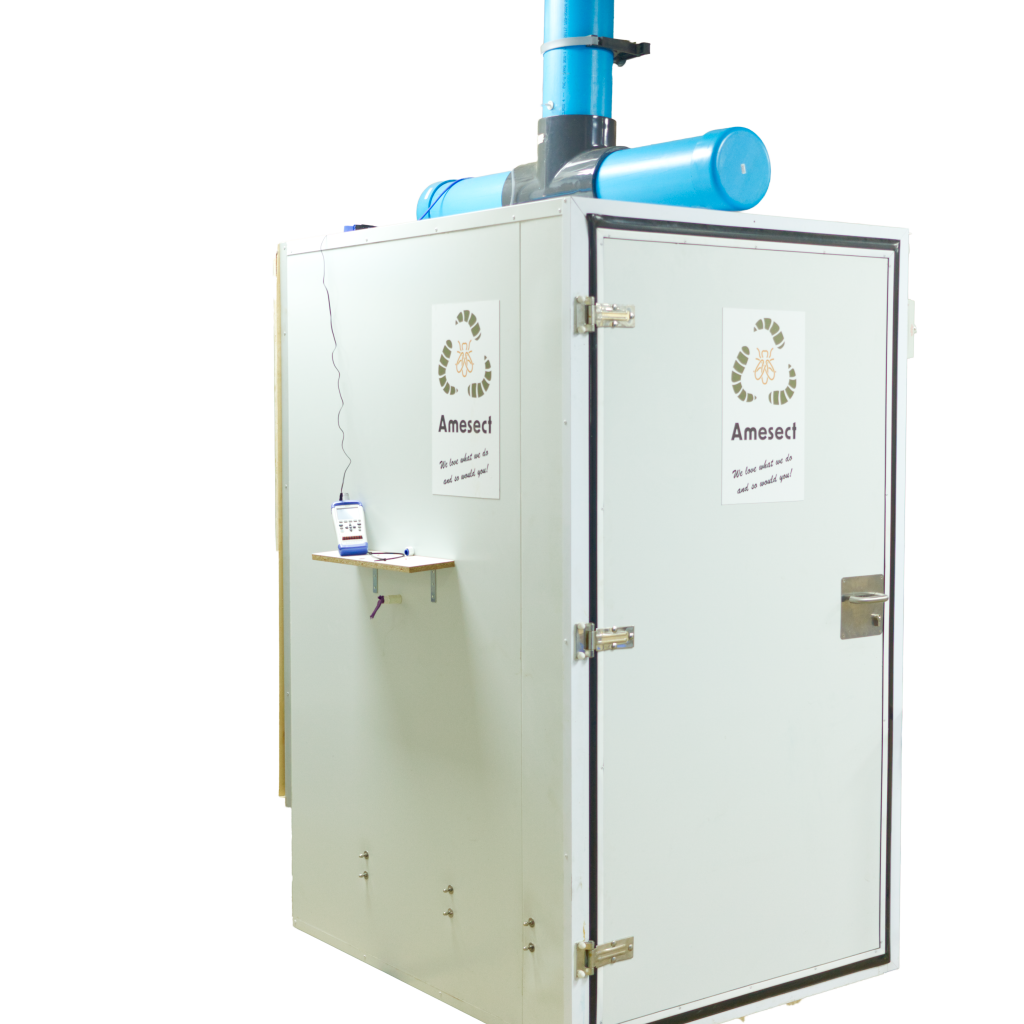
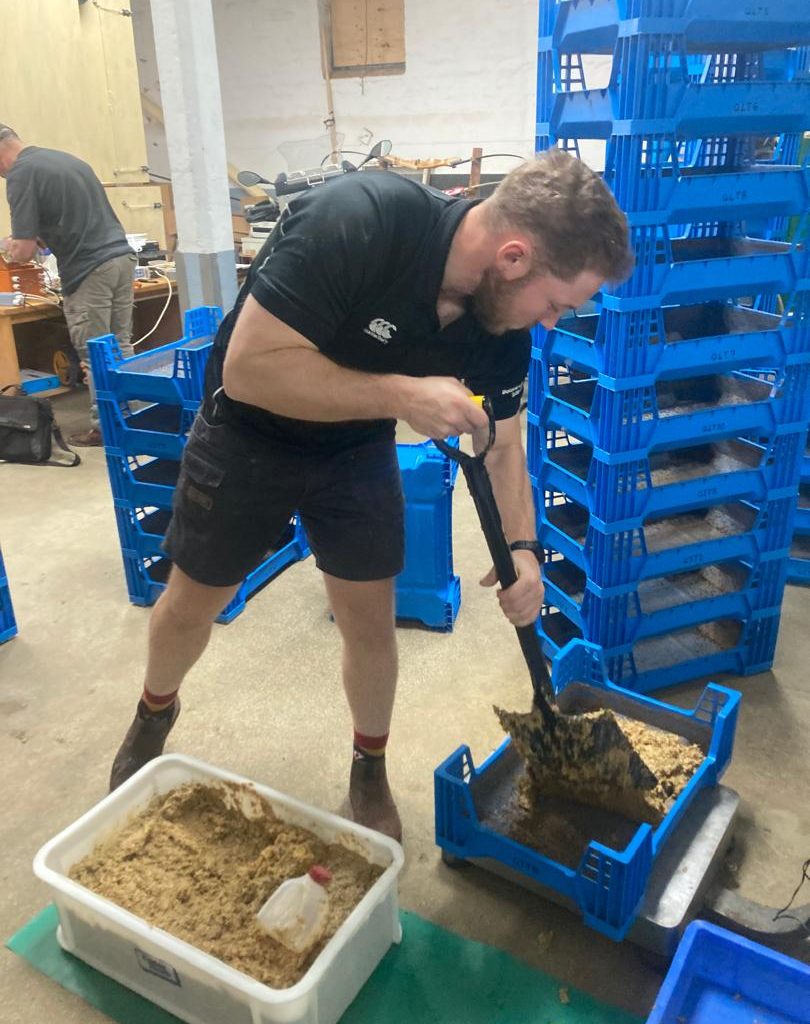
Closing the Loop
Once the larvae are harvested, they’re put to great use. Bernard, Grootbos’s dedicated and enthusiastic farm manager, has already started feeding the larvae to the chickens that supply fresh eggs for Grootbos’ restaurants — and judging by the video, the chickens can’t get enough of them!
This is what circular sustainability looks like in action — food waste from the kitchen becomes feed for insects, which in turn become feed for chickens, whose manure can then enrich the soil that grows the plants served in the restaurant. Of course Dr Pieterse as a qualified animal nutritionist is on hand to guide the chicken nutrition. The live larvae actually improve the behaviour of the chicken who relish the natural hunting of live prey. This in turns reduces pecking, further improving their overall well being. However, the diet needs to be balanced. The normal chicken feed can be reduced but not fully replaced by the larvae.
Meanwhile, Amesect is busy manufacturing the new Micro Magic³ system for Grootbos, scheduled for installation toward the end of 2025.
A Model for Sustainable Innovation
Grootbos has long been known for its dedication to conservation, but this project takes that commitment to a whole new level. By teaming up with Amesect and Natimby, they’re transforming waste into resources, energy, and growth — creating a living example of how innovation and nature can work hand in hand.
Well done to the Grootbos team for pioneering such a forward-thinking, sustainable way to manage waste — proof that even leftovers can lead to something truly remarkable.
Learn More About Our Partners in Innovation
At Amesect, we believe sustainability works best through collaboration — and this groundbreaking project with Grootbos Private Nature Reserve and Natimby is proof of that. Together, we’re showing how innovation in sustainable waste management can help businesses and nature thrive side by side.
Grootbos Private Nature Reserve
An award-winning 5-star eco-destination near Hermanus, South Africa, where luxury meets purpose. Grootbos is home to one of the world’s most diverse fynbos ecosystems and a community-driven approach to conservation that sets a new benchmark for regenerative tourism.
Visit: www.grootbos.com
Natimby
Pioneers in circular economy composting systems that transform garden, brush, and agricultural waste into nutrient-rich compost and renewable heat energy. Natimby’s innovations help farms and eco-projects reduce emissions while creating sustainable energy solutions.
Visit: www.natimby.co.za
Amesect
Leaders in black soldier fly technology and organic waste recycling, providing scalable solutions that convert food waste into sustainable protein for animal feed and high-quality organic fertiliser. Amesect’s systems help organisations close the loop — creating real-world examples of a thriving circular economy.
Visit: www.amesect.co.za
The Future Is Circular
From fine dining to fynbos, Grootbos is proving that with the right technology and mindset, waste can be transformed into a resource. Through their collaboration with Amesect and Natimby, they’re redefining what sustainability looks like — turning everyday waste into value, energy, and growth.
This is the future of sustainable innovation — turning waste into wonder.


